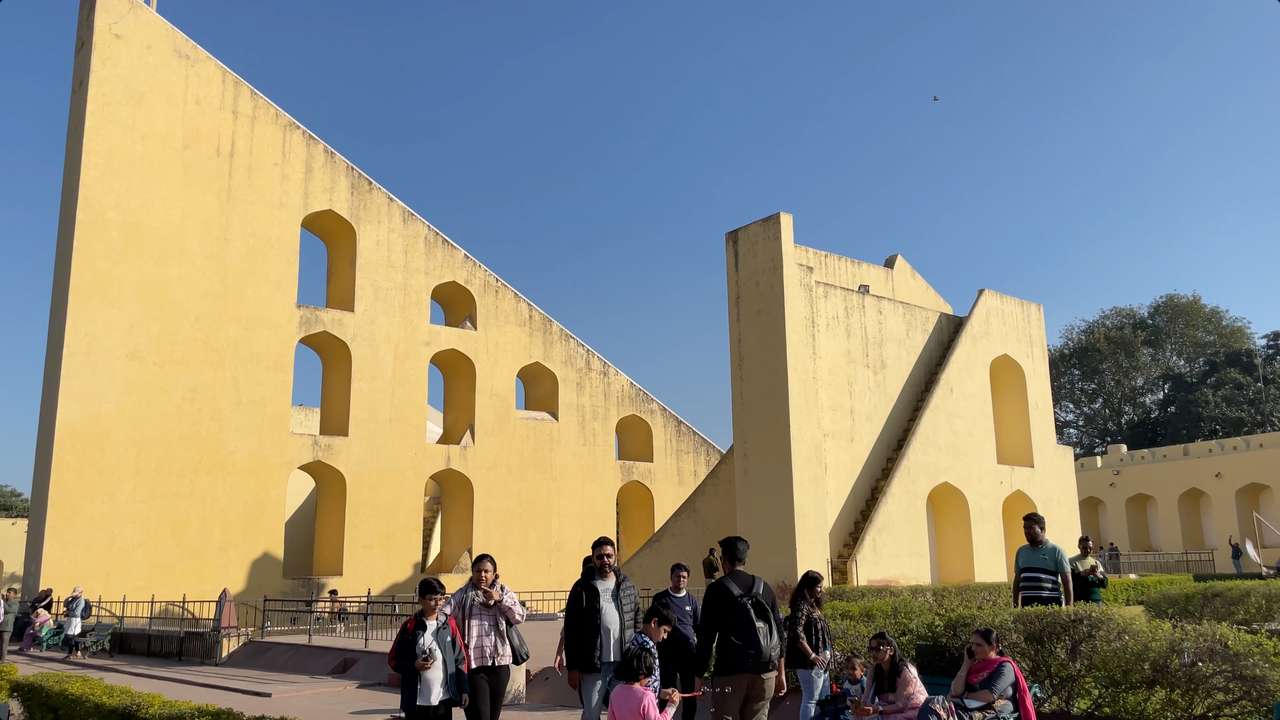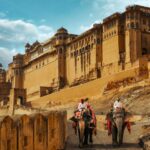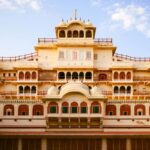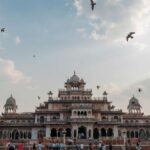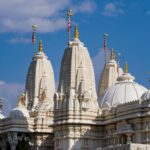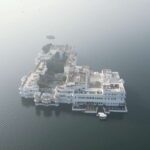There are a lot of locations that you can visit on your trip to Jaipur in Rajasthan. While a lot of your visit would include the forts and palaces and historical structure here, you will also find some unique locations here to visit as well. One such location is the Jantar Mantar Jaipur. The Jantar Mantar Jaipur is an open air astronomical observatory which is one of the major sightseeing spots of this location as well. And the best part is it is also one of the UNESCO World Heritage Sites as well and that makes the site even more alluring. One of the major attractions of this location is the Sundial that it features. And this sundial is also the largest sundial in the world. A rich history is attached to Jantar Mantar and it will be one of the most interesting to visit here.
This can be an interesting spot to visit for the ones who take a keen interest in celestial objects. People from across the globe visit here to observe the science behind cosmology. This open air observatory looks stunning in its appearance. And you can check out the Jantar Mantar Jaipur photos to see how attractive this site is. It can be the ideal location to visit with your family and kids. The kids would love the ambiance of this spot and enjoy exploring the things here. The observatory is far ahead of its time and has always been a place of wonder. And even today this is one of the sites that is exciting and interesting to explore.
Keep on reading this article as this will be a helpful article for you and I will mention everything that you need to know about Jantar Mantar Jaipur.
Jantar Mantar Jaipur
Location: Gangori Bazar, J D A Market, Kanwar Nagar, Jaipur, Rajasthan
Timings: The Jantar Mantar Jaipur timings are from 9 am to 5 pm on all days.
Light and Sound Show timings:
6:30 pm onwards from October to February
7 pm onwards from March to April
7:30 pm onwards from May to September
Entry fee: The Jantar Mantar Jaipur ticket price for Indians is Rs. 50 per person for adults and for Indian students it is Rs. 15 per person. For foreigners the ticket price is Rs. 200 per person for adults and for students it is Rs. 100 per person
How to reach
By air
If you are travelling by air then the nearest airport to reach Jantar Mantar is the Jaipur International Airport. From the airport the location of Jantar Mantar is 12.6 km away. It would take you around 30 minutes to reach the spot from the Jaipur airport. You can easily take a car or hire a cab as well to reach the location from the airport. Or else you can also opt for local transport of the area as well to reach the location conveniently from the airport.
By train
In case you wish to travel by train then the nearest railway station is the Jaipur Junction. From Jaipur Junction the location is 3.9 km away. It would take you only 15 minutes to reach the location of Jantar Mantar from the Jaipur railway station. You can take local transport in the area to easily travel to the location from the railway station.
By road
You can also travel by road to reach Jaipur as the location is easily accessible. There are buses available on this route and you can reach there from major cities and towns. If you are travelling from outside Rajasthan you will get buses to reach here. Both private as well as government buses are available here that you can opt for to reach the location. And if you are travelling within Rajasthan then also you will get regular buses from other cities and towns here like Jodhpur, Bikaner, Jaisalmer etc. You can travel by your own vehicle as well or else take a cab or hire a car. And in case you are travelling within the city of Jaipur then you can opt for local transport as well to travel shorter distances.
Best time to visit
The ideal time to visit a location like Jantar Mantar Jaipur would always be the winter months. The comparatively colder months would be the perfect time for the visitors to explore the location really well. As this is an open air observatory it would always be more comfortable to visit the location when the temperature is in check. The months from October to February are the ideal time to explore the location and its surroundings. Avoid visiting here during the hot summer months as it would be unbearable to roam around. Jaipur experiences a very hot and humid summer and it would not be the correct time to visit here during that time.
And if we are talking about the best days of visit you can try to visit here during the weekdays to avoid the crowd. The weekends are especially very crowded here so if you wish to explore the area in peace then the weekdays would be a better option. And in terms of the best time of the day, you can visit here early in the morning to avoid crowds. If you are visiting in the morning you would obviously get more time in peace to explore the area and to learn about the various instruments. However if you visit during the midday then also it would be great. During this time you would get to enjoy the shining sun and the sun rays cascading into different directions. Also you would get to understand how the sundial works and also get insight about ways to take readings from each instrument.
So do plan your visit to this location accordingly so that you can enjoy the best of the location. Have some time in hand to explore the area of Jantar Mantar well.
Overview of Jantar Mantar Jaipur
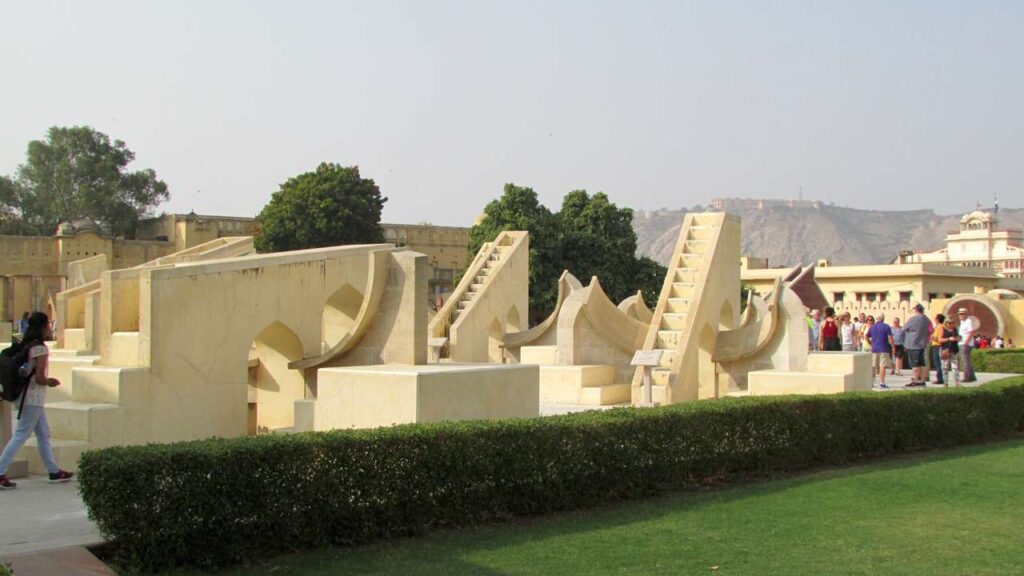
Located in the pink city of Jaipur the Jantar Mantar is one of the most popular sightseeing locations. Spreading across a huge area of 18,7000 meters this is an open air astronomical observatory in the city. What makes the site even more prominent is the fact that it houses 19 Jantar Mantar Jaipur monuments which are astronomical instruments. These are the instruments which are used to measure the distance and also the position of various celestial bodies. Furthermore Jantar Mantar also houses the largest sundial as well which is one of the 19 instruments here. Mainly the instruments are made here using stone, bricks, mortar and bronze.
It is further a name in the list of UNESCO World Heritage List as well that makes it a popular site to explore for visitors. Jantar Mantar is one such spot that was way ahead of its time. It further gives an insight of the socio-cultural scenario of the period of its construction as well. So if you are ever visiting Jaipur then you certainly need to visit this observatory. To explore the various ways by which the people back in the days used to read the stars and observe the sky would be extremely interesting to know.
Read More: Nahargarh Fort Jaipur Timings, Photos, Sheesh Mahal, Entry Fees
Jantar Mantar Jaipur History
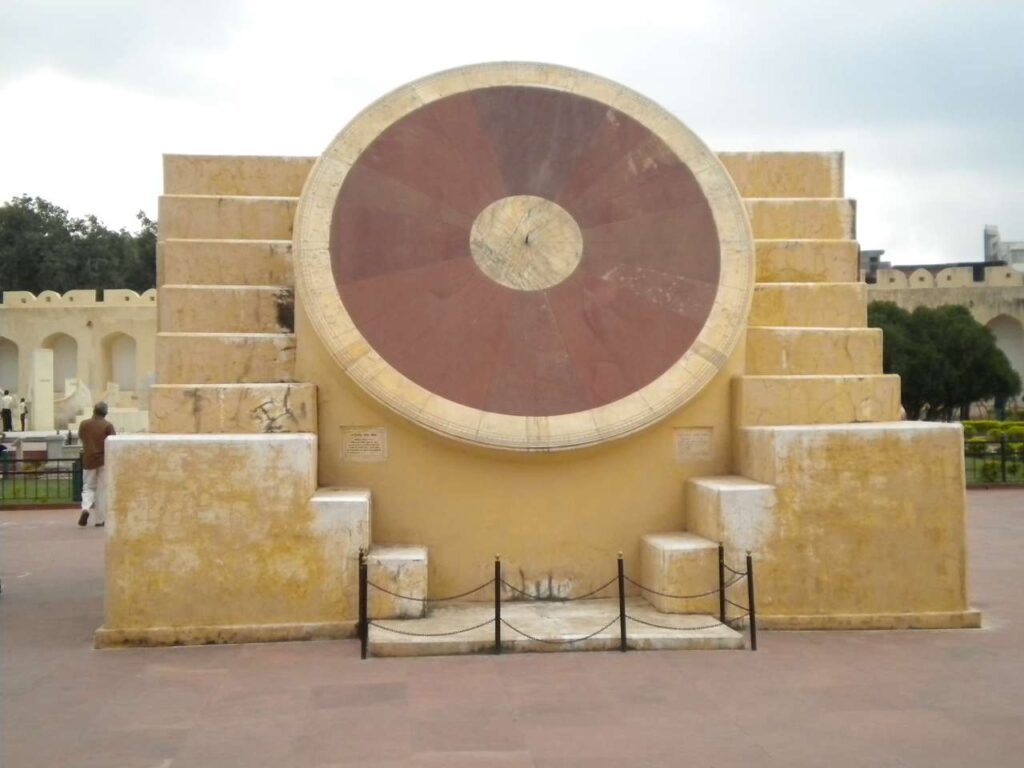
The construction of Jantar Mantar goes back to 1734 and Maharaja Sewai Jai Singh II built this structure. During that time once in a while Muhammad Shah would basically assign him a task. He asked him to confirm the current position as well as the movement of various celestial bodies. It was then that the founder of Jaipur city, Sewai Jai Singh II decided to create a well defined calendar. He was further very keen to make accurate predictions related to astrology. To turn this idea into reality he constructed Jantar Mantar in 1718.
However he wanted to expand the field of study and wanted to study the philosophical findings as has been laid by the different civilizations like Hindu, European, Persian and Islamic. Thus he built 5 such structures across India in various states. The one in Jaipur is the largest one and the construction took place between 1727 and 1733.
The instruments in the observatory are definitely the major attractions of this location. There were renovations from time to time to upgrade the structure as well. In 2010 UNESCO featured Jantar Mantar as a World Heritage Site. And at present the Archaeological Sites and Monuments of Rajasthan maintains the location.
Read More: Hawa Mahal Jaipur Timings, Ticket Price, History, Photos
Architecture of Jantar Mantar
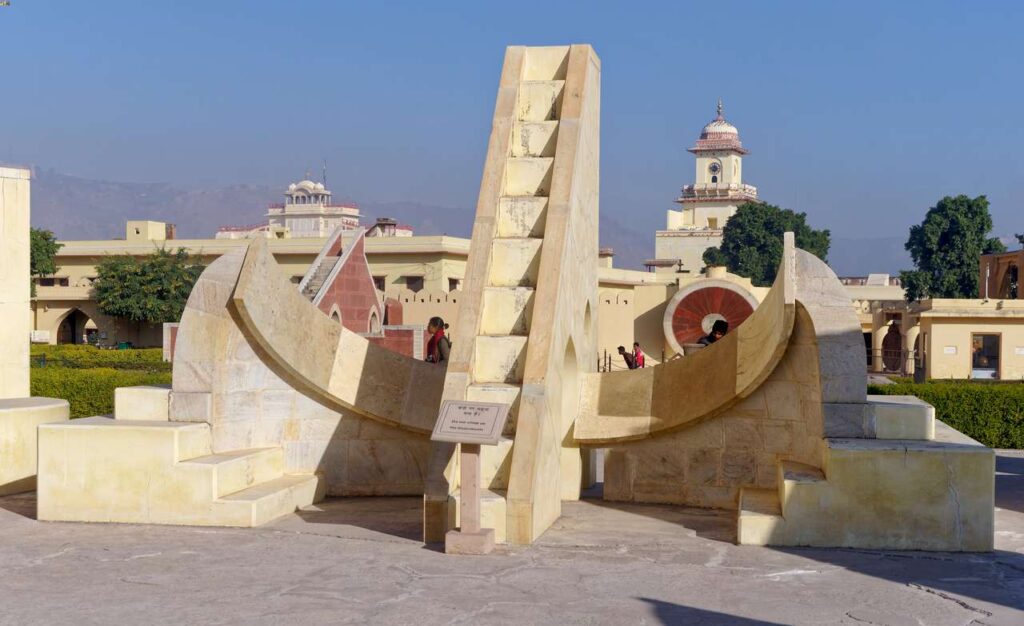
The architecture of Jantar Mantar Jaipur is one of the major attractions of this spot. The collection here includes a mix of both architectural as well as astronomical instruments. The main attractions here are however the 19 geometric devices here and each of them have their own specific functions. These devices can measure time, predict eclipses, ascertain decline of planets and planetary systems, depict celestial navigations, track major stars and constellations and can also track orbital stars. Some of these instruments are also one of the largest instruments as well. The instruments have also definitely passed the test of time and therefore they can withstand different climatic conditions. The instruments here are known as Yantra and they are:
1. Chakra Yantra
2. Dakshin Bhitti Yantra
3. Disha Yantra
4. Digamsha Yantra
5. Kanali Yantra
6. Jai Prakash Yantra
7. Dhruva Darshak Pattika
8. Kranti Vritta Yantra
9. Misra Yantra
10. Laghu Samrat Yantra
11. Nadi Valaya Yantra
12. Kapila Yantra
13. Palbha Yantra
14. Rashi Valaya Yantra
15. Rama Yantra
16. Shastansh Yantra
17. Vrihat Samrat Yantra
18. Unnatamsa Yantra
19. Yantra Raj Yantra
Wrapping Up!
So that was all about Jantar Mantar Jaipur and now you can plan a trip to this location as soon as you can. It would be one of the most exciting locations that you can visit in Jaipur. And furthermore there is a lot that you can learn from here. The insights that you will get from here would also be extremely interesting for a visitor to explore. And if you are someone who has a keen interest in celestial beings and the science behind it then you will have a great time here. Moreover the ancient construction was way too ahead of its time and even today it is one of the most exciting locations.
So when you are in Jaipur do not miss out on this location otherwise you will miss out on a lot. Let me know if this article is helpful for you in planning a trip to Jantar Mantar.
